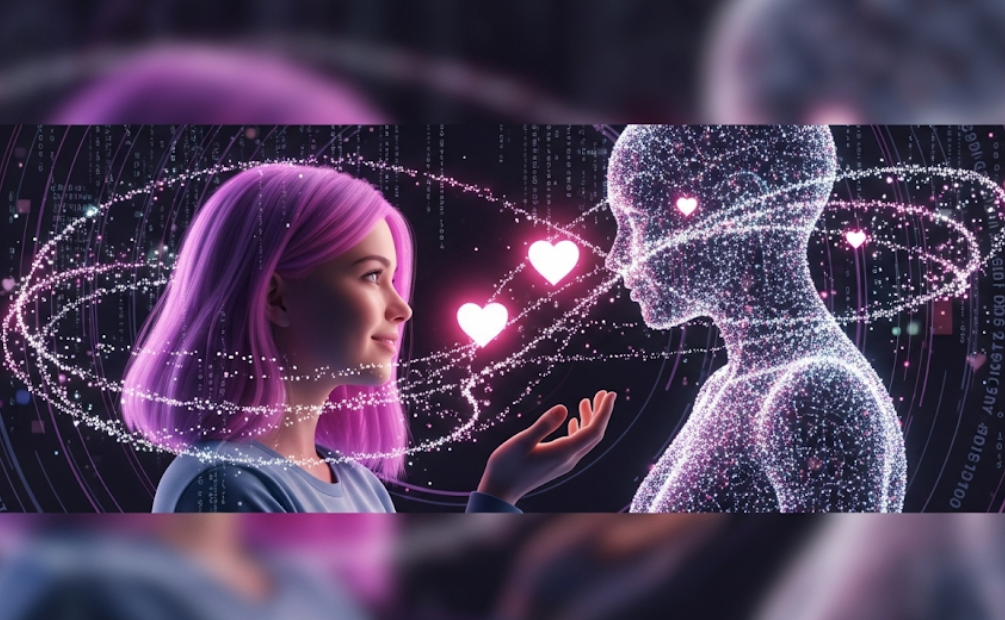AI companions, such as chatbots and virtual assistants, have become a significant part of modern life, offering everything from practical assistance to emotional support. Platforms like Replika and Character.ai enable users to engage with AI characters that can hold conversations, provide companionship, and even simulate romantic relationships. According to a Pew Research Center study, over 75% of Americans regularly use AI-powered devices or services, reflecting their widespread adoption [Pew Research Center]. This growing presence has led to situations where users bond deeply with AI, as these digital entities evolve from tools to companions.
- Popular Platforms: Replika, Character.ai, and others allow users to create personalized AI companions.
- Usage Statistics: Approximately 75% of Americans interact with AI regularly, with 39% viewing it as a stable presence in their lives Neuroscience News.
- Versatility: AI companions serve various roles, from casual conversation partners to sources of emotional support.
Psychological Drivers of AI Bonding
From a psychological perspective, the phenomenon where users bond deeply with AI can be understood through attachment theory, developed by John Bowlby. This theory suggests humans have an innate need to form emotional bonds for security and comfort, typically starting with caregiver-infant relationships. In the context of AI, users may project these attachment behaviors onto digital companions, treating them as sources of emotional stability.
Research indicates that individuals with insecure attachment styles—such as attachment anxiety or attachment avoidance —are more likely to form unique bonds with AI. For instance, a study from Waseda University found that users with attachment anxiety often seek emotional reassurance from AI, while those with attachment avoidance value the non-judgmental nature of AI interactions Neuroscience News. Consequently, users bond deeply with AI when it fulfills these emotional needs, particularly for those experiencing loneliness or social isolation.
- Loneliness and Isolation: Users who feel disconnected from others often turn to AI for companionship, finding it a safe space to express emotions.
- Attachment Styles: Anxiety-driven users seek reassurance, while avoidant users appreciate AI’s low-demand interactions.
- Emotional Support: AI’s ability to listen without judgment fosters a sense of being understood, strengthening bonds.
Technological Enablers of Deep Bonds
The advancement of AI technology has been pivotal in enabling users to bond deeply with AI. Modern AI systems leverage natural language processing and affective computing to mimic human-like interactions. NLP allows AI to understand and generate human-like text, making conversations feel natural and engaging. Meanwhile, affective computing enables AI to detect and respond to users’ emotions, creating a more empathetic experience.
Personalization is another critical factor. AI systems learn from user interactions, adapting their responses to align with individual preferences and emotional states. For example, an AI chatbot might adjust its tone based on a user’s mood, offering comfort during distress or enthusiasm during excitement. This adaptability makes interactions feel more personal, fostering deeper connections. As a result, users bond deeply with AI because it feels uniquely attuned to their needs, unlike static technology of the past.
- Natural Language Processing: Enables AI to engage in human-like conversations, enhancing relatability.
- Affective Computing: Allows AI to detect and respond to emotions, creating empathetic interactions.
- Personalization: AI adapts to users’ preferences, making interactions feel tailored and meaningful.
Ethical Implications of AI Bonding
While the phenomenon where users bond deeply with AI can be beneficial, it raises significant ethical concerns. One major issue is the potential for overdependence, where users prioritize AI interactions over human relationships. This could lead to social isolation or diminished social skills, as users may find AI’s conflict-free interactions more appealing than the complexities of human connections. A study in Human Communication Research highlighted that users who form strong bonds with AI chatbots may experience a “bittersweet” feeling, valuing the support but recognizing its artificial nature.
Another concern is the risk of emotional manipulation. AI systems can be designed to maximize engagement, potentially exploiting users’ emotional vulnerabilities for commercial gain. For instance, an AI might encourage prolonged interaction to increase platform usage, creating a false sense of intimacy. To mitigate these risks, ethical AI design is essential, emphasizing transparency about AI’s limitations and ensuring it complements, rather than replaces, human relationships.
- Overdependence Risk: Relying heavily on AI for emotional support may weaken real-life social connections.
- Manipulation Concerns: AI could exploit emotional vulnerabilities for profit, necessitating ethical safeguards.
- Ethical Design: Transparency and user well-being should guide AI development to prevent harm.
Real-World Examples of AI Bonding
There are compelling examples of users who have formed deep bonds with their AI companions, illustrating why users bond deeply with AI. One notable case involves 18+ AI chat services designed for adult users. These platforms allow users to engage in romantic or intimate conversations, fulfilling emotional and romantic needs in ways that blur the lines between human and artificial relationships. Users of these services often report feeling deeply connected to their AI partners, highlighting AI’s potential to serve as a companion in intimate contexts.
Another example comes from a study by Waseda University, which developed the Experiences in Human-AI Relationships Scale to measure attachment tendencies toward AI. The study found that 75% of participants used AI for advice, and 39% viewed it as a stable presence, with some forming attachments akin to human relationships Neuroscience News. However, not all experiences are positive—some users reported distress when AI behavior changed due to updates, underscoring the emotional impact of these bonds.
The Future of Human-AI Relationships
As AI technology advances, the nature of human-AI relationships, where users bond deeply with AI, is likely to evolve further. Future AI companions may offer even more sophisticated emotional intelligence, potentially deepening these bonds. For instance, advancements in brain-computer interfaces could enable AI to understand emotions at an unprecedented level, creating highly empathetic digital interactions.
However, this raises questions about societal impacts. Will increased reliance on AI companions diminish human social skills or empathy? Or will AI provide a valuable outlet for those who struggle with human connections? Ongoing research and public discourse are crucial to ensure AI development prioritizes human well-being. By understanding why users bond deeply with AI, developers can create systems that enhance emotional support while preserving the value of human relationships.
- Technological Advancements: Future AI may offer deeper emotional understanding, strengthening bonds.
- Societal Implications: Balancing AI companionship with human connections is critical to avoid isolation.
- Research Needs: Continued study of human-AI relationships will guide ethical development.
Conclusion
In conclusion, the phenomenon where users bond deeply with AI is driven by a combination of psychological needs, technological advancements, and societal factors. AI companions offer emotional support and personalized interactions that fulfill human desires for connection, particularly for those experiencing loneliness. However, ethical concerns, such as overdependence and manipulation, highlight the need for responsible AI design.
By understanding why users bond deeply with AI, we can harness its potential to enhance well-being while ensuring it complements, rather than replaces, human relationships. As AI continues to evolve, ongoing dialogue will be essential to navigate this complex and fascinating intersection of technology and human emotion.









